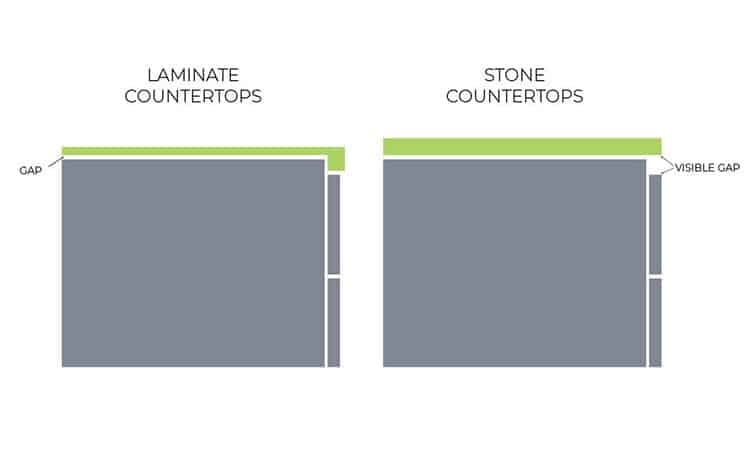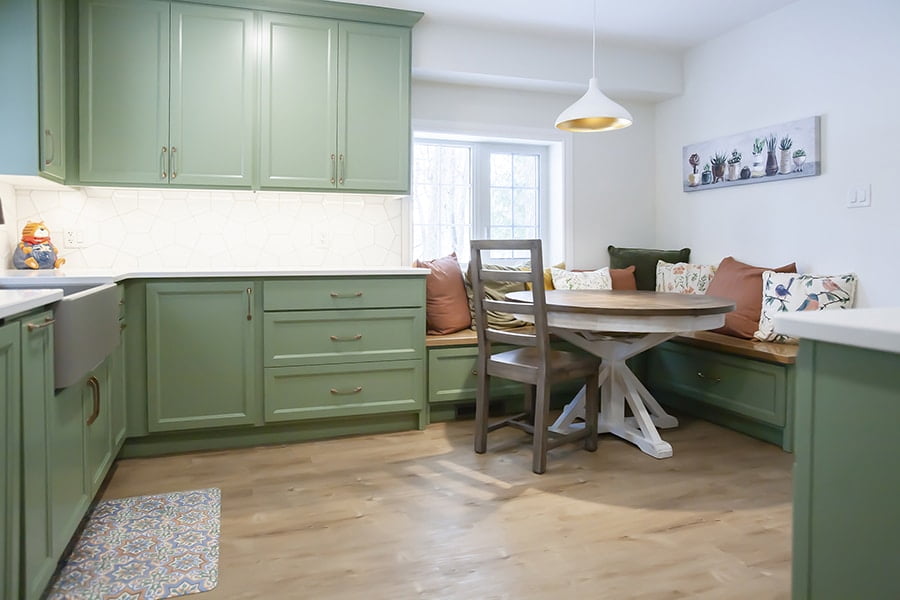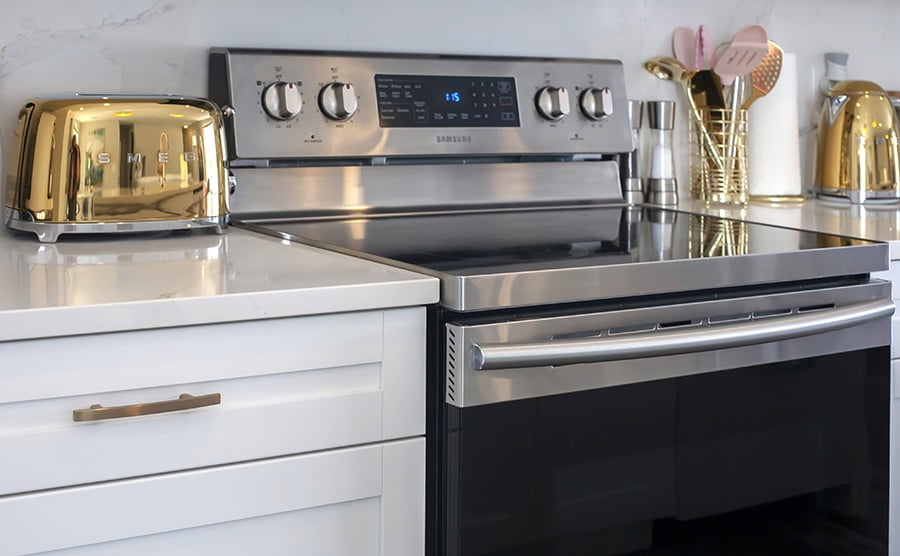Here you are, finally making the leap and ripping out those old laminate countertops and upgrading to an incredible slab of quartz or granite. It’s an exciting day and nothing can spoil it.
Until…
The installers bring in the stone, set it in place and everything looks beautiful. Well, almost everything. You don’t see it at first, but it’s there.
The gap.
(Before your mind heads down the wrong track, we’re not talking about a stylish place at the mall to buy some khakis… we mean an actual gap between your cabinet doors and your countertop)
This is something we run into regularly as countertop fabricators, especially when our customers are replacing existing laminate countertops without altering the cabinetry in any way. We do our best to make everyone aware, but sometimes it’s easier to understand with some helpful visuals and a little extra explanation. So here we are with all the answers about that gap and what you can do about it!

Why is there a gap?
It all comes down to how the original countertops were constructed. Laminate countertops are made by gluing a very thin layer of material to wood, and if you’re only using one layer of wood, it can be less than an inch thick. In order to have the nice finished edge, sometimes an additional piece of wood is glued on to line up with the front edge, and more laminate is applied to the vertical surface. When you build cabinetry with the intention of installing laminate countertops that are made this way, the cabinets are built with a raised platform to accommodate this set-up. This way the front lip of the countertop hides the edge and everything looks perfectly put-together.
The problem comes in when you want to replace the countertops with something like stone. A stone slab doesn’t have a lip. It’s solid and the same thickness throughout. If you put stone countertops onto cabinets that are built for laminate… Hello gap!

It also doesn’t help that most houses (older ones in particular) have walls or floors that aren’t perfectly plumb or level, so cabinets and countertops often make use of shims to ensure your grapes don’t roll right off. Because of this, that space that’s usually hidden behind the lip can look crooked or uneven. It’s completely normal, but not always nice to look at.
Of course, not all laminate countertops are made using a lip, so how would you know ahead of time? The easiest way is to crouch down and take a look, or poke your fingers around underneath the edge of the countertop to see if you can feel a space. Still not sure? Take some pictures and let our experts help!

Should you rethink using stone?
Of course not! We’re probably biased but we think stone countertops are beautiful, durable, and always a good choice for a kitchen or bathroom renovation. It just helps to be prepared with the tools and information to ensure it looks it’s best, and avoid any unpleasant surprises.
What can you do?
The simplest solution (we’ll leave the most complicated one up to your imagination) is to add a piece of trim to cover the gap. A well-placed trim will hide any unsightly gaps, and provide a finished edge to pull the old cabinetry and new countertops together. There are lots of trim options available for any style of cabinetry, and most trim installation is a do-able job for DIYers. If you’re feeling unsure about doing it yourself, any handyperson would be happy to help.
If you have any other questions before you invest in stone countertops for an upcoming bathroom or kitchen remodel, we’re always happy to help! Come down to our showroom or contact us. We’d love to help you discover how you can use one of our many types of stone in your home.

